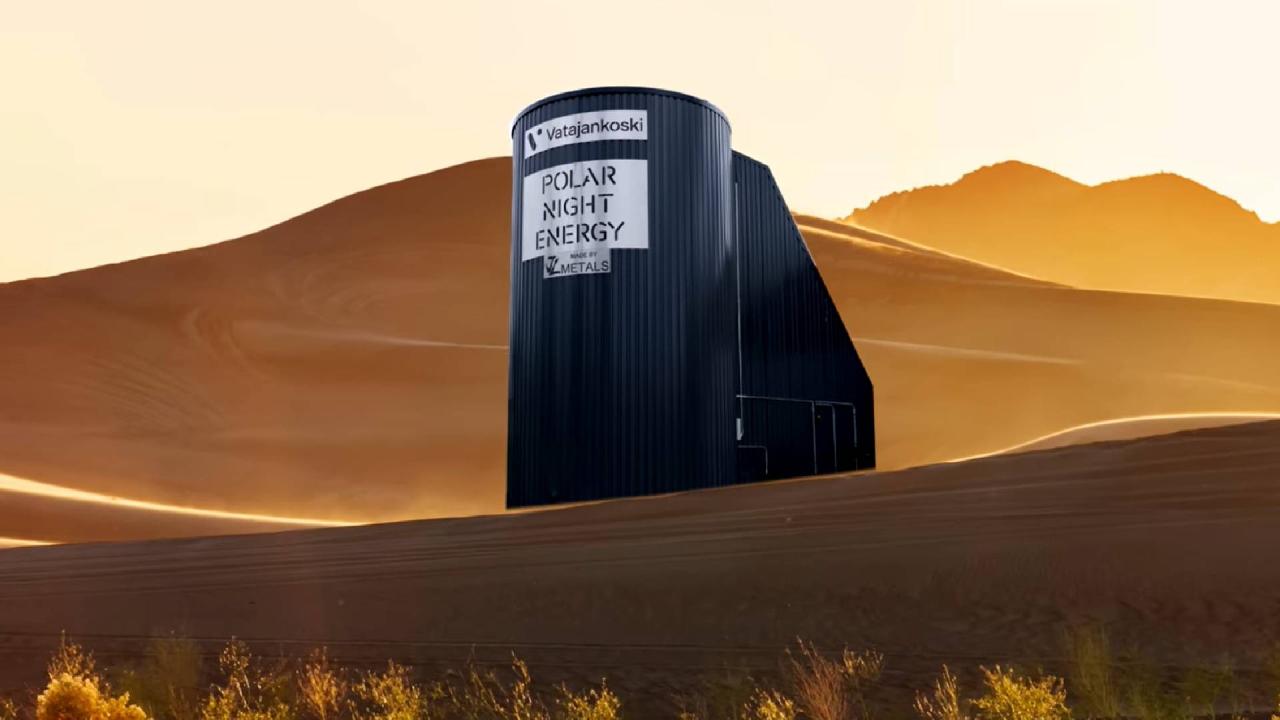As global energy consumption surges and the call to reduce carbon emissions becomes more urgent, the search for innovative energy storage solutions has intensified. Among the most groundbreaking developments in renewable technology is the sand battery an eco friendly thermal storage system that is turning heads in the energy sector.
In this article, we will explore what a sand battery is, how it works, why it’s being hailed as a revolutionary green solution, and what role it may play in shaping the future of sustainable power grids. From its technical components to its global implications, we’ll unpack everything you need to know about this fascinating innovation.
What Is a Sand Battery?
A sand battery is a thermal energy storage system that uses sand or sand-like materials to store heat, which can later be converted into energy when needed. Unlike lithium-ion or lead-acid batteries, which store electrical energy, a sand battery primarily stores thermal energy, making it particularly useful for heating applications and supporting power grids during peak demand times.
This type of battery is not only simple in concept but also relatively inexpensive to build and maintain, making it ideal for large-scale energy storage.
How Does a Sand Battery Work?
The mechanism behind a sand battery involves heating sand to very high temperatures using excess electricity, often generated from renewable sources like solar and wind. This heat is stored within the sand for long periods due to its excellent thermal retention properties.
Here’s how it generally functions:
A. Energy Input
When there is a surplus of electricity, typically during sunny or windy days, the power is redirected to a heating element.
B. Heat Transfer
The heating element warms up the sand, which is stored in a highly insulated steel tank to reduce heat loss.
C. Energy Storage
Sand retains heat extremely well and can reach temperatures upwards of 500 to 1,000 degrees Celsius. The heat is stored until it is needed.
D. Energy Output
When energy demand increases, the heat from the sand is used to generate steam or hot air, which can then be used to heat homes, industrial facilities, or be converted back into electricity.
Key Advantages of Sand Battery Technology

This innovative technology brings numerous benefits that make it appealing for future energy strategies:
A. Sustainability
Sand is abundant, non toxic, and completely recyclable. Unlike lithium, which is resource-intensive to mine, sand is environmentally friendly and widely available.
B. Cost-Effectiveness
The materials used in sand batteries primarily sand and steel are inexpensive. The system also requires less maintenance compared to chemical batteries.
C. Long-Term Storage
While chemical batteries tend to lose charge over time, sand batteries can store heat for months, making them excellent for seasonal storage.
D. Renewable Energy Optimization
By capturing and storing excess renewable energy, sand batteries help prevent wastage and allow for better use of solar and wind power during off-peak hours.
E. Grid Stability
They provide a stable backup during energy shortages or blackouts, contributing to a more resilient power grid.
Real World Applications: Where Sand Batteries Are Being Used
Several pioneering projects around the world have already implemented sand battery systems, proving their viability in real-world conditions.
Finland: A Leading Example
One of the most notable sand battery installations is in Kankaanpää, Finland, where engineers from Polar Night Energy have developed a commercial-scale sand battery system capable of storing 8 MWh of thermal energy.
The system uses 100 tons of sand, heated by renewable electricity, and is connected to the local district heating network. This pilot project has demonstrated excellent efficiency and potential for scale-up, attracting global interest.
Other Notable Projects
-
Germany is exploring the use of sand battery systems to support its aggressive shift away from fossil fuels.
-
Canada is assessing the potential for sand-based thermal storage in off-grid communities.
-
India and Africa are evaluating sand batteries for rural electrification and heating in remote areas.
Comparing Sand Batteries to Traditional Storage Systems

To understand the true value of sand battery technology, it’s helpful to compare it to other existing storage methods:
A. Lithium Ion Batteries
Pros:
-
Quick response time
-
High energy density
-
Portable
Cons:
-
Expensive raw materials
-
Environmental concerns
-
Shorter lifespan
B. Pumped Hydro Storage
Pros:
-
Large capacity
-
Proven technology
Cons:
-
Requires specific geography
-
High environmental impact
C. Hydrogen Storage
Pros:
-
Long-duration energy storage
-
Can be used for transport and industry
Cons:
-
Complex infrastructure
-
High energy loss in conversion
D. Sand Battery
Pros:
-
Sustainable and non-toxic
-
Affordable
-
Long-duration storage
-
Simple infrastructure
Cons:
-
Primarily provides heat (not electricity)
-
Less suited for mobile applications
Challenges and Limitations
While sand batteries offer many benefits, they also face some challenges:
A. Energy Conversion Efficiency
The conversion from heat back into electricity is less efficient compared to direct electrical storage systems.
B. Limited Use Cases
Currently, sand batteries are best suited for stationary applications such as district heating or industrial processes, not for mobile or small scale use.
C. Public Awareness
As a new technology, many communities and governments are still unfamiliar with sand battery systems, delaying widespread adoption.
D. Infrastructure Requirements
Installing sand battery systems at scale requires integration with existing heating and energy networks, which can be costly in older urban environments.
Future of Sand Battery Technology
Despite current limitations, the potential for sand batteries is vast. Researchers and engineers are working to overcome technical challenges and expand the capabilities of this technology.
Innovations on the Horizon
-
Hybrid Systems: Combining sand batteries with photovoltaic panels or wind turbines for a fully integrated energy solution.
-
Electricity Conversion: Improving thermoelectric systems that can turn stored heat into electricity more efficiently.
-
Smart Controls: Using AI and IoT to monitor, manage, and predict energy usage for optimal performance.
Global Adoption Trends
Many governments and environmental organizations are now considering sand batteries as a key player in achieving carbon neutrality. Grants and subsidies are being offered to pilot sand battery projects in urban and rural settings alike.
Why Sand Batteries Matter for Climate Goals
The shift to renewable energy isn’t just about producing clean electricity it’s about storing it efficiently. Energy storage systems are essential for dealing with the intermittency of renewable power sources. Solar panels don’t produce power at night, and wind turbines can be idle during calm days.
Sand batteries offer a clean, scalable, and affordable method for storing excess energy and using it when it’s most needed. This makes them a critical component in the transition to a net-zero energy future.
As the world races to combat climate change, technologies like sand batteries offer hope and practicality. With their low environmental footprint, affordability, and effectiveness in thermal energy storage, sand batteries are poised to transform the global energy landscape.
Their simplicity belies their potential: an age-old material like sand might just hold the key to our energy future. While further development is needed, the groundwork has been laid, and the heat is rising literally.
The sand battery is no longer a concept of tomorrow; it is a functioning reality today, and it might just power the future.












